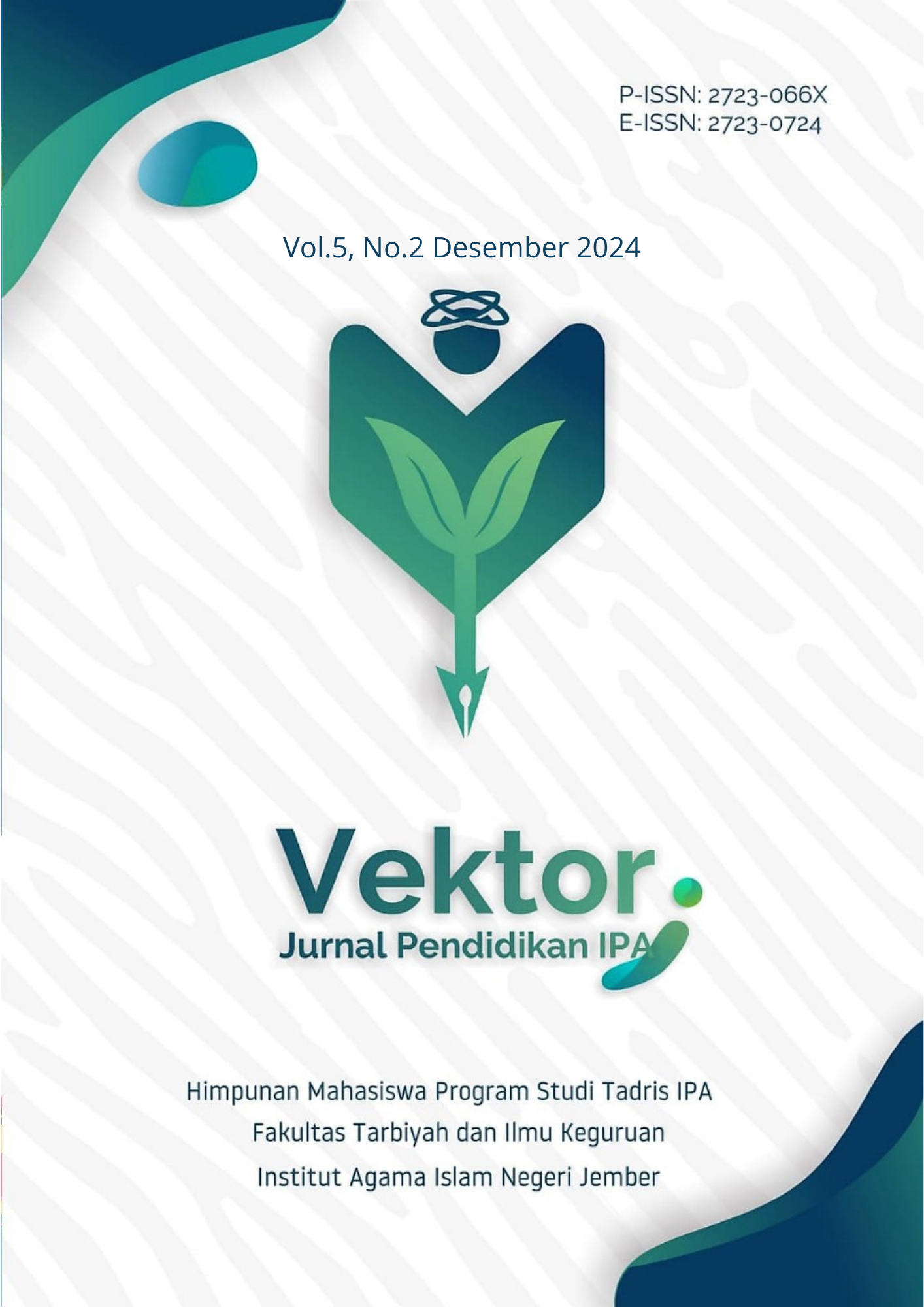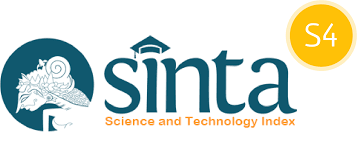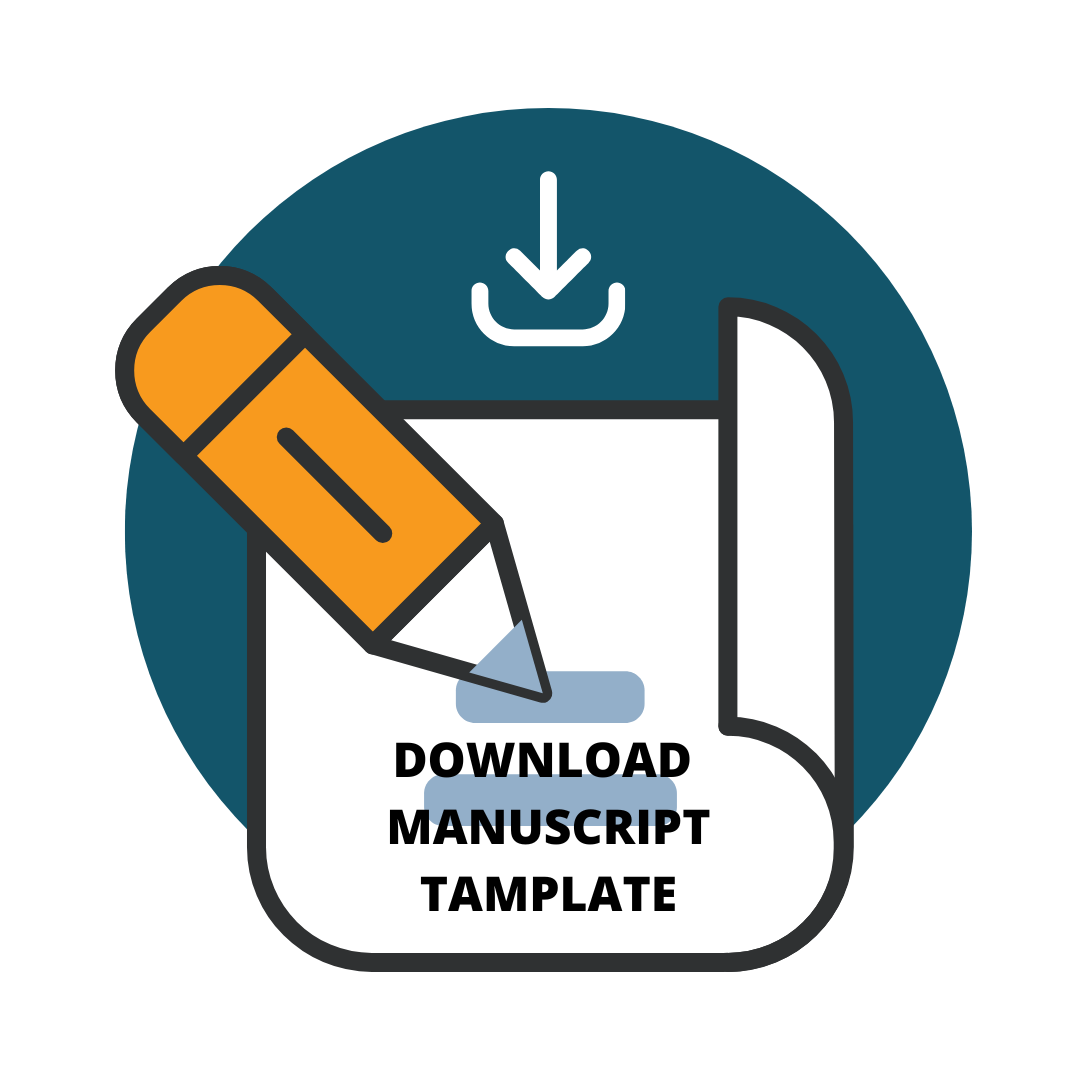Meningkatkan Minat Siswa pada Pembelajaran IPA dengan Menggunakan Model Problem Based Learning pada Materi Ekologi dan Keanekaragaman Hayati
Keywords:
Minat Pembelajaran IPA, Problem Based learning, Ekologi dan Keanekaragaman Hayati, Interest in Science Learning, Problem Based Learning, Ecology and BiodiversityAbstract
Penelitian ini bertujuan untuk meningkatkan minat dan hasil belajar siswa terhadap IPA dengan penerapan model Problem Based Learning (PBL). Penelitian tindakan kelas ini terdiri dari 2 siklus dan melibatkan 22 siswa di salah satu SMP di Kabupaten Bandung Barat. Instrumen yang digunakan adalah angket minat sains dengan 5 indikator, masing-masing terdiri dari 4 pertanyaan. Analisis data menggunakan analisis deskriptif dengan membandingkan hasil motivasi siswa antara siklus 1 dan siklus 2. Hasil penelitian menunjukkan peningkatan minat siswa terhadap IPA dari 68,41% pada pra-siklus, menjadi 71,53% pada siklus 1, dan 71,76% pada siklus 2. Selain itu, hasil belajar juga meningkat dengan rata-rata kelas dari 69,64 pada siklus 1 menjadi 76,40 pada siklus 2.
Kata Kunci: Ekologi dan Keanekaragaman Hayati, Minat Pembelajaran IPA, Problem Based learning.
This research aims to increase students' interest and learning outcomes in science by implementing the Problem Based Learning (PBL) model. This classroom action research consisted of 2 cycles and involved 22 students at one of the junior high schools in West Bandung Regency. The instrument used was a science interest questionnaire with 5 indicators, each consisting of 4 questions. Data analysis used descriptive analysis by comparing the results of student motivation between cycle 1 and cycle 2. The results showed an increase in student interest in science from 68.41% in the pre-cycle, to 71.53% in cycle 1, and 71.76% in the cycle 2. In addition, learning outcomes also increased with the class average from 69.64 in cycle 1 to 76.40 in cycle 2.
Keywords: Ecology and Biodiversity, Interest in Science Learning, Problem Based Learning.
References
Ananda, Y., H. Rahmatan, Samingan, I. Huda, Mudatsir. (2023). Application of the Video-Assisted Problem Based Learning Model to Increase Student Learning Motivation in Virus Material. Jurnal Penelitian Pendidikan IPA, 9 (8), 6230-6237, https://doi.org/10.29303/jppipa.v9i8.4766
Ansari, A.H., Alpisah, M.Yusuf. (2022). Konsep dan Rancangan Manajemen Kurikulum Merdeka di Tingkat Sekolah Menengah Pertama. Pusat Publikasi S-1 Pendidikan IPS FKIP ULM, 1(1), 34-45, https://doi.org/10.20527/tmkm.v1i1.496
Boye, E. S., D.D. Agyei. (2023). Effectiveness of problem-based learning strategy in improving teaching and learning of mathematics for pre-service teachers in Ghana. Elsevier: Social Sciences & Humanities Open 7, 1-7, https://doi.org/10.1016/j.ssaho.2023.100453
Djajadi, M., A. Rauf, (2020). Learning Physics of Motion and Force Using The Outdoor Activities: An Effort to Increase Student’’s Interest and Achievement at Secondary School. Jurnal Pendidikan IPA Indonesia, 9 (2), 208-218, https://doi.org/10.15294/jpii.v9i2.24001
Efendi, P.M., T. Muhtar, Y.T. Herlambang. (2023). Relevansi Kurikulum Merdeka Dengan Konsepsi Ki Hadjar Dewantara: Studi Kritis Dalam Perspektif Filosofis-Pedagogis. Jurnal Elementaria Edukasia, 6 (2), 548-561, https://doi.org/10.31949/jee.v6i2.5487
Ernawati, M. D. W., dkk. (2022). The Influence of Student Interest on Student Learning Outcomes in Science Subjects. Jurnal Pendidikan Sains Indonesia, 10 (4), 849-861, https://dx.doi.org/10.24815/jpsi.v10i4.25306
Fadlilah, B. A. (2019). Upaya Meningkatkan Minat Belajar IPA dengan menerapkan Media Diorama Kelas 4. Jurnal Pendidikan Guru Sekolah Dasar Edisi 14, 13347-1358, https://journal.student.uny.ac.id/index.php/pgsd/article/view/15175
Hidayat, R. T., Yurnetti, Hamdani. (2019). Pengaruh Penggunaan Model Problem Based Learning (PBL) Berbantuan Handout Terhadap KOmpetensi Fisika siswa di Kelas X SMAN 2 Kota Solok. Pillar of Physics Education. 12(4),705-712, http://dx.doi.org/10.24036/7351171074
Ho, L., I. P. Devi. (2020). Students’ Understanding of Interest in Learning Science. Integrated Science Education Journal (ISEJ), 1 (2), 60-64, https://doi.org/10.37251/isej.v1i2.72
Hu, H. (2022). Rethinking nature journaling in the Kindergarten Program action research in learning and teaching. Journal of Outdoor and Environmental Education 25,159–179, https://doi.org/10.1007/s42322-022-00095-0
Husna, Yarni. (2019). Pendekatan Problem Based Learning (PBL) Untuk Meningkatkan hasil Belajar Belajar IPA Pada Kelas VII. 4 SMP Negeri 14 Pekanbaru tahun Pelajaran 2017-2018. Jurnal Nathiqiyah, 2(1), 1-12, https://ojs.diniyah.ac.id/index.php/Nathiqiyyah/issue/view/6
Jothy, K.O. A., N. Winarno, L. Hakim, Y. Wahyuningsih, P. Nurhaida. (2024). Problem-Based Learning Towards Student’s Motivation: An Action Research”, Pillar of Physics Education, 17 (1) 8-16, http://dx.doi.org/10.24036/15734171074
Korompot, S., M. Rahim, R. Pakaya. (2020). Persepsi Siswa Tentang Faktor yang Mempengaruhi Minat Belajar. Jambura Guidance and Counseling Journal, 1 (1), 40-48,
https://ejournal-fip-ung.ac.id/ojs/index.php/jgcj/article/view/136/77
Lamb, R. L., L. Annetta, J. Meldrum, D. Vallett. (2012). Measuring Science Interest: Rasch Validation Of The Science Interest Survey. International Journal of Science and Mathematics Education, 643-668,
Lestari, Dwi N. (2023).Penerapan Model Pembelajaran Problem Based Learning (PBL) Untuk Meningkatkan Minat Belajar Siswa Pada Materi Evolusi. Journal of Natural Science Learning, 2(2), 23 – 29, https://jom.uin-suska.ac.id/index.php/JNSL/article/view/464
Novanto, W. A., F. Reffiiane, Karsono. (2022). Penerapan Model PBL Berbantu Media Interaktif Untuk Meningkatkan Partisipasi dan hasil Belajar Siswa IIIB SD Supriyadi Semarang. Praniti Jurnal Pendidikan, Bahasa, & Sastra, 2(1), 61-68, http://jurnal.unw.ac.id:1254/index.php/praniti/index
Rahmmadani. (2019). Metode Penerapan Model Pembelajaran Problem Based Learning (PBL). Lantanida Journal, 7(1), 1-100, http://dx.doi.org/10.22373/lj.v7i1.4440
Rieschka, M.N. (2020). Problem Based Learning Pada Pembelajaran IPA Di Sekolah Dasar. SHEs: Conference Series, 3 (3), 1499 -1505, https://jurnal.uns.ac.id/shes
Samadun, Dwikoranto. (2022). Improvement of Student's Critical Thinking Ability sin Physics Materials Through The Application of Problem-Based Learning. IJORER : International Journal of Recent Educational Research, 3 (5), 534-545, https://doi.org/10.46245/ijorer.v3i5.247
Subaktiyo, N., N.C. Sakti. (2023). Model Problem Based Learning Dalam Pembelajaran Materi Kerja Sama Ekonomi Internasional Untuk Meningkatkan Minat Belajar Siswa. Jurnal Educatio, 9 (3), 1416-1423, https://doi.org/10.31949/educatio.v9i3.5870
Sulistiana. (2022). Peningkatan Hasil Belajar Siswa melalui Model Pembelajaran Problem Based Learning (PBL) pada Mata Pelajaran IPA Kelas IV SDN Blimbing Kabupaten Kedir. PTK: Jurnal Tindakan Kelas, 2(2), 127-133, https://doi.org/10.53624/ptk.v2i2.50
Sutarto, J. Prihatin, S. Hariyadi, & I Wicaksono. (2021). Development of student worksheets based on STEM approach to improve students' critical thinking skills. National Seminar of Physics Education, Jember 1-6, https://doi.org/10.1088/1742-6596/2104/1/012009
Sutrisna, N & P. R. Sasmita. (2022). Model Pembelajaran Problem Based Learning (PBL) Terhadap hasil Belajar IPA Peserta Didik kelas VII SMP. SPEJ (Science and Phsics Education Journal), 5(2), 34-39. https://doi.org/10.31539/spej.v5i2.3849
Ubaidillah. (2019). Pengembangna Minat Belajar Kognitif Pada Anak Usia Dini. JCE (Journal of Childhood Education), 3 (1), 58-85, https://doi.org/10.30736/j
Uziak, J., V. P. Kommula. 2(019). Application of Problem Based Learning in Mechanics of Machines Course. iJEP, 9 (1), 68-83, https://doi.org/10.3991/ijep.v9i1.9673
Yew, E. H. J., K. Goh. (2016). Problem-Based Learning: An Overview of its Process and Impact on Learning. ScienceDirect: Health Professions Education 2, 75-79, http://dx.doi.org/10.1016/j.hpe.2016.01.004
Downloads
Published
How to Cite
Issue
Section
License
Copyright (c) 2025 Afy Rizky Awalia, Nanang Winarno, Erna Risfaula Kusumawati, Henhen Hendrawati

This work is licensed under a Creative Commons Attribution-ShareAlike 4.0 International License.
Authors who publish with this journal agree to the following terms:
- Authors retain copyright and grant the journal right of first publication with the work simultaneously licensed under the terms of the CC BY-SA 4.0 License that allows others to share the work with an acknowledgment of the work's authorship and initial publication in this journal.
- Authors are able to enter into separate, additional contractual arrangements for the non-exclusive distribution of the journal's published version of the work (e.g., post it to an institutional repository or publish it in a book), with an acknowledgment of its initial publication in this journal.
- Authors are permitted and encouraged to post their work online (e.g., in institutional repositories or on their website) prior to and during the submission process, as it can lead to productive exchanges, as well as earlier and greater citation of published work.






